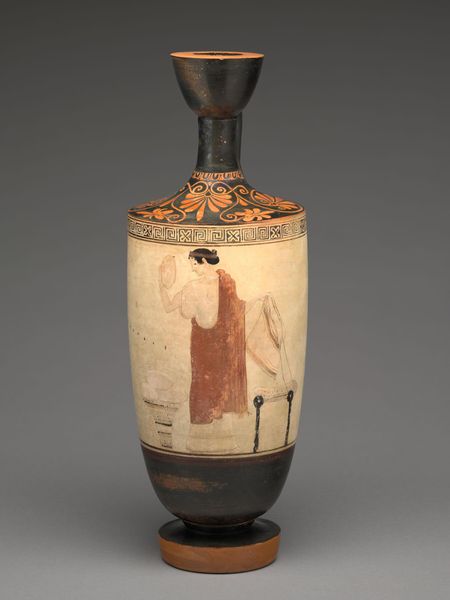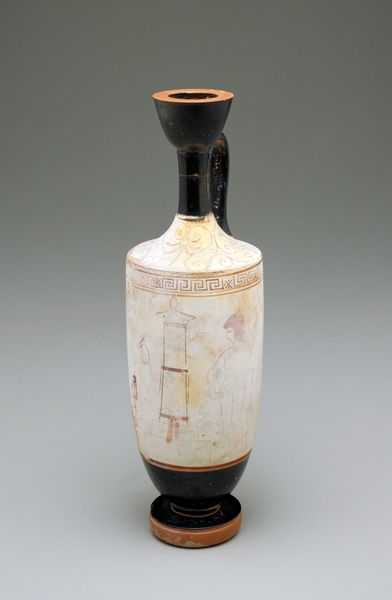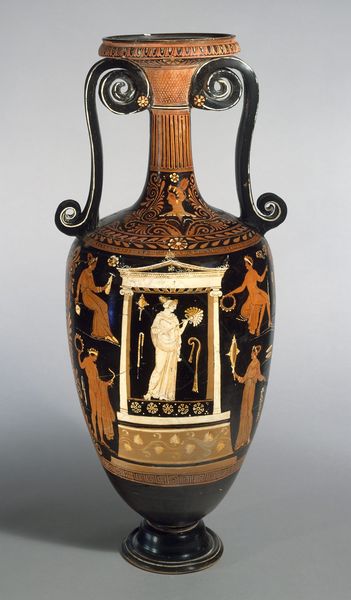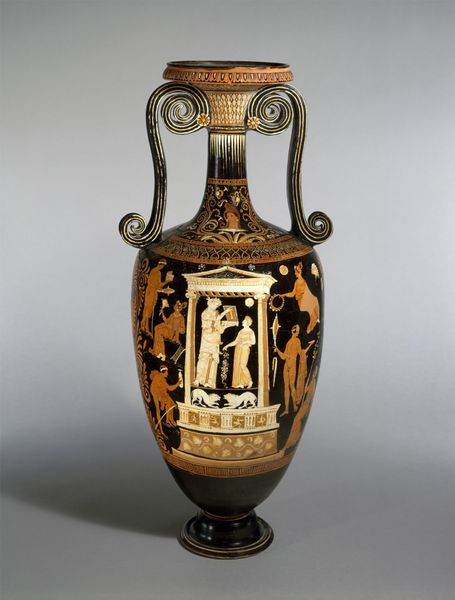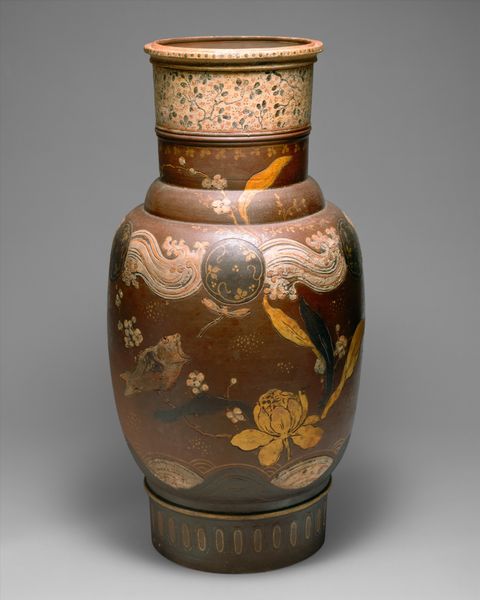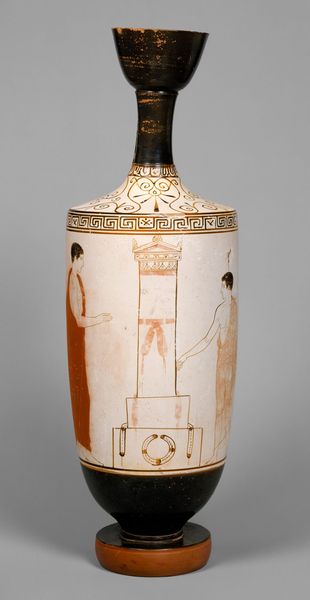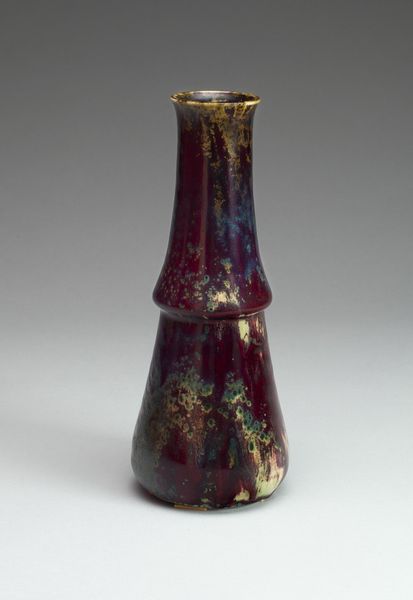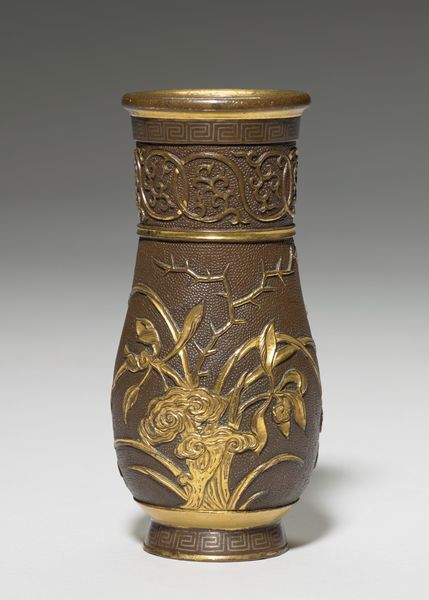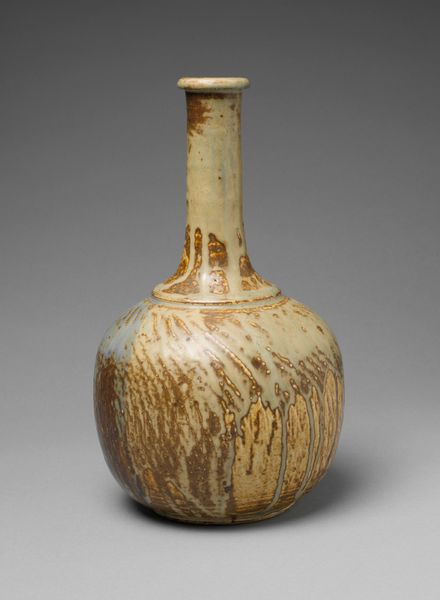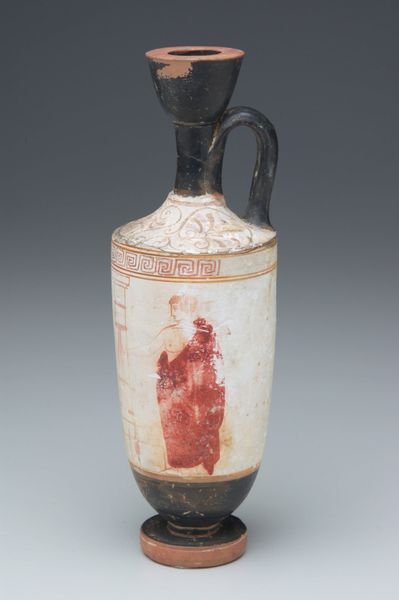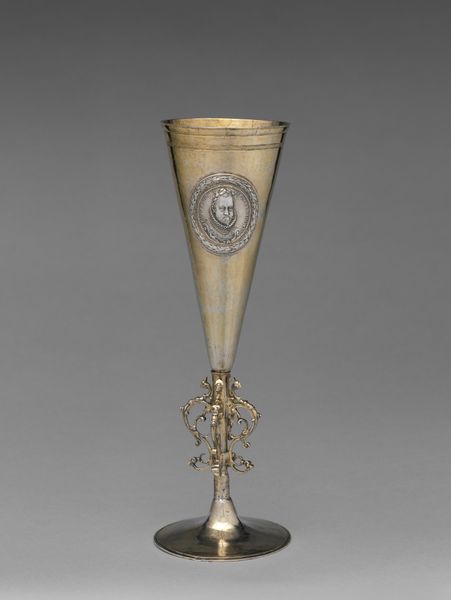
drawing, ceramic
#
drawing
#
greek-and-roman-art
#
ceramic
#
figuration
#
vessel
#
ancient-mediterranean
#
ceramic
Dimensions: H. 30.8 cm (12 1/8 in.); diam. 9.8 cm (3 7/8 in.)
Copyright: Public Domain
Editor: Here we have an ancient Greek Lekythos, an oil jar, dating back to around 445 BCE. It’s currently housed at The Art Institute of Chicago. The figures on it seem faded and worn. I’m particularly drawn to the central figure… What can you tell me about its symbolism? Curator: The image shows a figure in profile, likely part of a funerary scene, as lekythoi were commonly used in burial rituals. Given the state of preservation, much is lost to us, but the enduring quality lies in recognizing what persists despite time. Ask yourself: what emotions arise as you gaze upon this scene? Editor: A sense of solemnity, definitely, and maybe some acceptance. There’s something dignified about its simplicity. What’s the significance of the vessel itself? Curator: Vessels, throughout human history, have represented much more than mere containers. Think about it: they hold sustenance, life’s necessities. In the context of a funerary lekythos, it's not simply oil, but an offering; a conduit. Notice how even the geometric patterns, the meander, the stylized lotus blossoms, are motifs reflecting continuity and order in the face of mortality. Editor: It’s interesting how the practical object becomes something deeply symbolic. Curator: Exactly. It bridges the world of the living and the departed, carrying cultural memory through its imagery. Even damaged, its message echoes across millennia. What will this vessel whisper to those who find it centuries from now, I wonder? Editor: A powerful way to consider how we use imagery in our modern world. Thanks! Curator: An honor to shed light on such vessels!
Comments
No comments
Be the first to comment and join the conversation on the ultimate creative platform.
